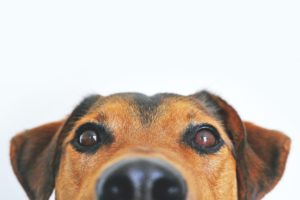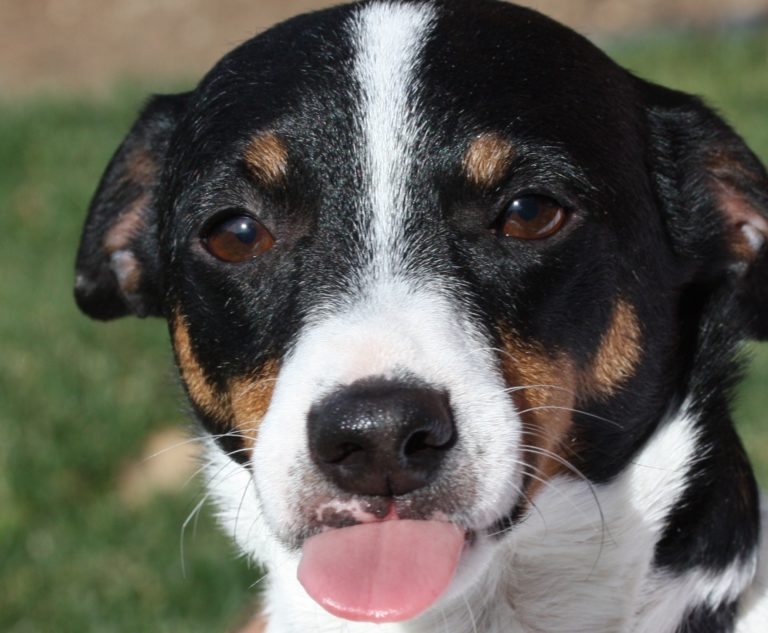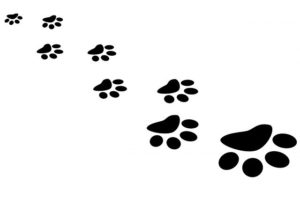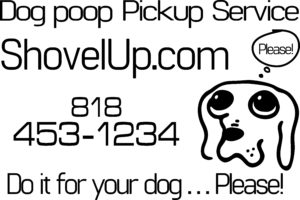
Dog Waste Removal Service.
The first lesson to remember is always the most important lesson.
This first lesson does not involve your dog, but instead it involves you!
Your dog does not come with an owner’s manual… so how you go about this is important.
Your little friend is always and will forever be willing to learn and be apart of the family through the process of training.
Training leads to bonding…bonding leads to love, and love leads to everlasting commitment with a whole lot of love and play in-between!
This is your mission!
Your pup does not know the difference between training and play. This is the time to make training fun and playful. Nobody ever learned mathematics from the flat end of the math teacher’s paddle!
How you go about bonding with your little friend is so especially important because this is the make-or-break moment when it comes to training your best friend.
If you use the wrong approach with your pup your expectations and desires for behavior modification will take much longer and be much more difficult to achieve, thus not being good for you or your dog. For this reason, it is always advisable to have a clear and well-defined plan before you bring your little friend home for the first time.
Please see “Alfred’s tips for the first-time dog owner.”
For you to achieve the proper training and behavior modification that you are hoping to achieve, it is especially important that you take a good look at how your interactions will influence the training and bonding process with your soon to be best friend.
Here are good honest tips. The first tip is to take an honest personal self inventory of yourself.
Have somebody you trust available to observe your training approach, and if you are too mean they will have to tell you. Don’t be mean to your dog, but instead give him love and praise!
Remember there is always a learning curve not only for you but, for your dog as well.
First thing to remember is never lose your temper or become frustrated training while your new friend!
Let me explain a little further.
For example, let us say you are trying to potty train your dog and you want him to do his business outside in the backyard in a predetermined area like someplace far away from the back door and/or bedroom windows.
Remember your dog does not know where to go.
This is a lesson he must first learn.
Watch him when he is in the house. One of the cues you might see in his behavior is that he starts to sniff at a particular area in the house and then starts to circle. He might select an area in the house that is far from the place where he eats, or where he rests. He might go in the other room to do his thing, so you really must watch him when he goes into the other room.
Once you spot that circling, sniffing behavior issue a verbal command like “Go Potty” along with visual hand signals like a closed fist from the right hand tapping on the upward facing palm of the left hand. Then go and pick him up gently and kindly relocate him to the predetermined location.
Do not yell “No” and start running at him. Negative reinforcement is not only ineffective, but detrimental to healthy emotional development. Just kindly and gently pick him up and relocate him to the predetermined area.
Hold you love and praise until he does his business in the backyard in the predetermined area.
Incorporate visual hand signals along with verbal commands.
Choose a place that is distraction free. Conduct your training sessions at the same time each day.
By being consistent with the way in which you conduct your training sessions, including using the same location, and at the same time every day, your pup will become accustomed to this schedule and expect you to train him at this time every day.
It is little points like this that can help make training easier!
It is always important to associate a verbal command with a visual hand signal for any desired behavior. For example, when you want your pup not to jump on you or others when you come through the door after a long day gently grab his forelimbs and place his front paws on the ground. Then with the palm of your right hand facing downwards issue the verbal command “Down.”
He is excited to see you. Especially if he is a young pup! Younger pups have a shorter attention span.
This may take a little practice at first, but with time, patience, and practicing strict consistency when it comes to the use of both hand signals and verbal commands your pup will soon learn.
By incorporating a verbal command with a visual hand signal as a cue, your pup will learn that there is something that you expect of him thereby giving him the opportunity to execute the behavior correctly the first time. There are an infinite number of combinations of visual hand signals coupled with verbal commands. For example, if you wanted your dog to stay simply hold your right hand up with the palm of you hand facing the dog and issue the command to “stay.” If you wanted you dog to lay down for example, touch the ground where you would like him to lay down at with your index and middle finger while issuing the verbal command “lie.”
It is best to use only one syllable commands that do not sound a like. Once he realizes the association between the verbal cue and the visual cue, he will be more than willing to do it every time!
You will be overjoyed to learn you have the smartest dog on the block! Your dog will absolutely love you back thus reinforcing the bonding process.
You must be patient and consistent every time regarding how you conduct each training session.
Remembering this is key!
Your dog wants to learn of course, but how good are you when it comes to training your dog a behavioral concept that your dog has never learn before? Remember not to lose your temper because it is not your dog’s fault.
In loosing your temper and becoming frustrated you may end up creating a fear response cycle that will be hard to break once it is set up in your pup’s mind. This is something you may want to avoid at all costs.
Your new friend does not understand English and does not have the faintest idea what good manners are, and he does not come with a manual. Take it easy on him! Remember your new pup has not found his place in your family on the first day he comes home. He is in a new and foreign environment of which he can not escape from and has no place to seek refuge.
Give him a couple of days to adjust to his new home and give him love and affection including space from time to time.
Give him love and affection.
Using treats to reinforce positive behaviors.
There have been studies in which MRI scans clearly show that the same regions in a dog’s brain that is responsible for the release neurotransmitters as a reward when receiving love and praise, were often even stronger than the same response elicited by food treats! Love and praise works. Negative reinforcement does not work. It only harms the relationship you have with your dog.
It is ok for you to reward your pup with a healthy food treat that your vet recommends, but you do not have to do it every time. You do not have to give a food treat every time, especially when a treat may not be available at the time in which you need to effect control over you dog. Being in public would be a good example.
Please do not give them people food like chips, and or crackers. When you compare the amount of sodium in terms of milligrams verses you dog’s weight you will see that the amount of salt is exceptionally large. Your dog gets enough sodium and potassium and other vitamins from his food.
Please do not give you pup any candy! Dogs are not omnivores, but carnivores. Their digestive systems do not process sugars like high fructose corn syrup well. This in turn could lead to diabetes in your dog along with other health issues!
Chocolate is deadly to dogs! Please do not give any manufactured sugars to your dog.
Your dog does not know better, but you do! Make sure to educate yourself regarding what a good diet looks like. Then read the ingredients label to make a desirable choice in choosing what brand of dog food, including treats that would best suit your breed of dog.
All these suggestions are plain common sense and not rocket science.
Here are things you should expect as your pup grows physically and mental.
The first 8 weeks.
During the first 8 weeks you new friend will rambunctious and full of energy. This is something to expect. His world is a completely new experience to him, so be patient with him.
You can begin basic training sessions with him at this time. Train him to go potty in the back yard in a predetermined area.
You can also train him to not to jump up on people when they come through the door. Gently grasp his forelimbs and place his paws on the floor while providing the proper hand signal along with appropriate verbal command.
Issue the “Down” command along with the palm of your right hand facing down at your dog’s eye level would be a good verbal and visual cue to use.
You do not want your friend to jump on people. This is a desirable behavior.
Now that you have modified that behavior you will need to train him “sit,” “lie down,” and “stay.”
These commands should go together as a group executed in sequence.
Not only is it important to modify the undesired behavior, but it is also important to follow up with the desired behavior he learned as a sequence of behaviors. Your friend will learn not to jump up on people, but instead he will go and lie down when people come into the house!
If you expect your new friend to meet with other dogs, make sure the other dogs are fully vaccinated, and friendly. If there is any aggression simply intervene and take control of the situation until the aggression has stopped.
Social skills will be important through out your friend’s life.
If you feel he ready for leash training you may start at this time, however if he is not ready you do not have to start leash training. You will have time in the future to do that.
Remember to always be consistent and patient each time!
Your new friend still has a short attention span. Never loose you temper!
12 to 14 weeks.
Continue like you did in the first 8 weeks by continuing to expand his basic training sessions by introducing new commands along with new hand signals. Continue like you did in the first 8 weeks by continuing to expand his social skills while around other dogs. Give him a chew toy. It is ok for him to chew if it is not on the couch! If this behavior presents you will have to modify it. That is what a chew toy is for.
It is important to allow your friend alone time!
He will need some time alone in the backyard to discover that the backyard is a safe and secure place to be, and that he is not in any danger at any time when nobody else is home. It is important for him to be secure in knowing that when everybody leaves that they will eventually return back home to see him again. Dogs are highly emotional due to the fact that the only way they could have survived in a landscape in which they were not the apex predator was through the evolution of social order. This is the emotional side of your dog’s brain. This fact has been established through modern science and MRI scans of their brains. Your dog depends on you for everything ranging from food and water to love and shelter.
Do not hit your dog or yell at him. This will only isolate him from the pack that he depends on so much for his very survival! In this case his pack is not comprised of other dogs, but you and your family! He will love you for it! Remember all dogs that are loved will surely lay their very lives down to protect the family first. How many friends does a person have that would do that for you? Take care of your dog and let Shovel Up help!
He should be secure when you or other family members are not home.
Three months.
Keep doing what you are doing like you did before. If you were consistent and patient and understood that commands should always be taught as a group, you should be fine at this point.
Leash training should be easier to teach at this point too. Get a book regarding advanced training techniques or hire a professional to conduct advanced training.
Remember the basics!
1, The first lesson to remember is always the most important lesson. This first lesson does not involve your dog, but instead it involves you!
2, This is your mission!
3, The first tip is to take an honest personal self inventory of yourself. Have somebody you trust available to observe your training approach, and if you are too mean they will have to tell you. Don’t be mean to your dog, but instead give him love and praise!
4, Remember your dog does not know where to go. This is a lesson he must first learn.
5, Incorporate visual hand signals along with verbal commands. Choose a place that is distraction free. Conduct your training sessions at the same time each day. By being consistent with the way in which you conduct your training sessions, including using the same location, and at the same time everyday, your pup will become accustomed to this schedule and expect you to train him at this time everyday. It is little points like this that can help make training easier!
6, You must be patient and consistent every time regarding how you conduct each training session. Remembering this is key!
7, Commands should go together as a group executed in sequence.
8, Give him love and affection. Use treats to reinforce positive behaviors.
9, Remember to always be consistent and patient each time! Your new friend still has a short attention span. Never loose you temper!
10, Remember to let Shovel Up take care of the rest!
We Pick Up The Poop For You.
Thank you for taking the time to review our website, and remember to call today for 10% discount for the next 6 months!
Get the first week free with one month prepaid service… contact us!
Our Hours of Operation:
Monday Through Friday
9:00 am Through 5:00 pm
We Also Can Provide Service During Non Business Hours As Needed.
Feel Free To Contact Us By Phone 24 Hours A Day. We Will Always Answer the Phone When Doody Calls!
Ask Mark Visit ShovelUp.com Or Just Call!
Mark@shovelup.com


Do It For Yourself, Do It For Your Family, And Most Of All, Do It For Your Dog. Please.


